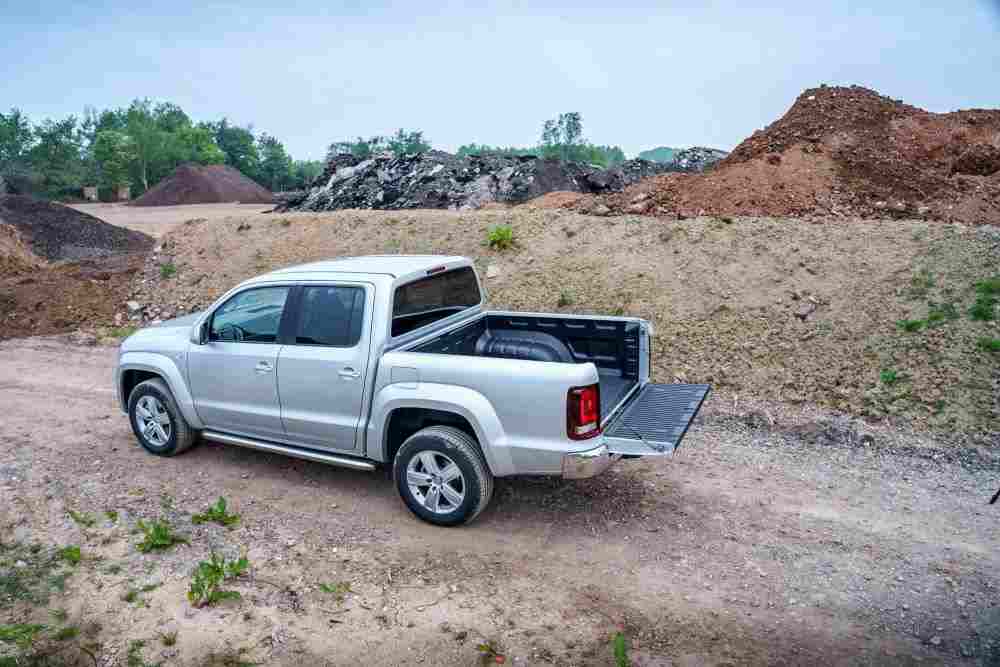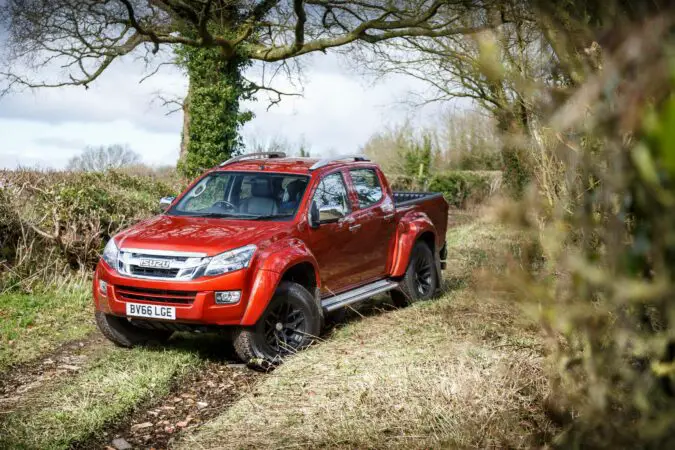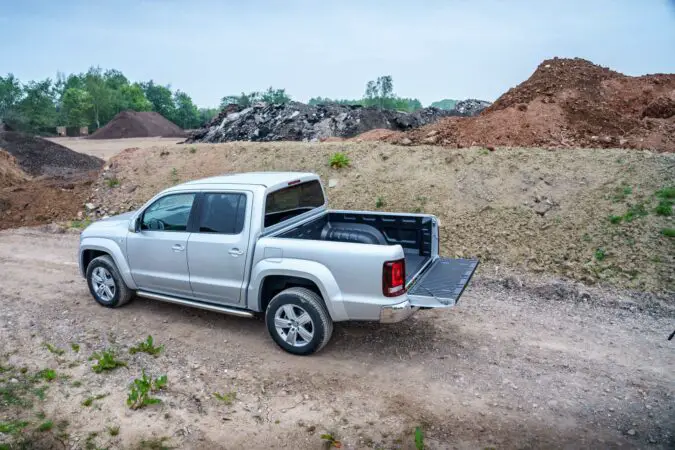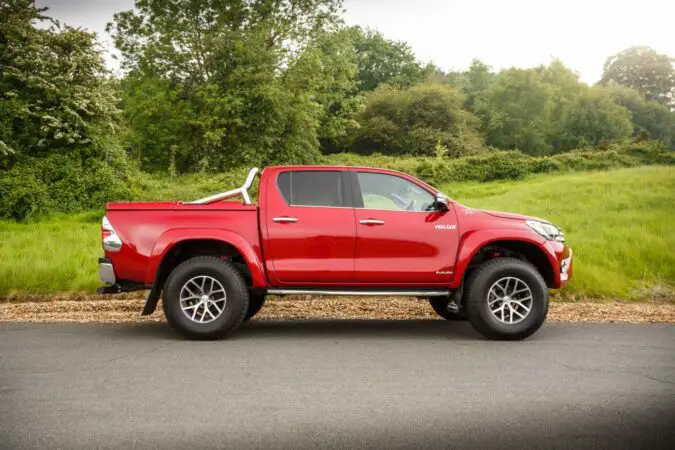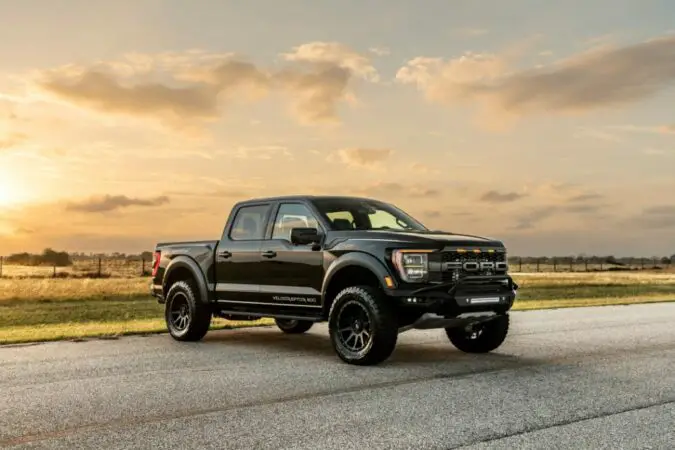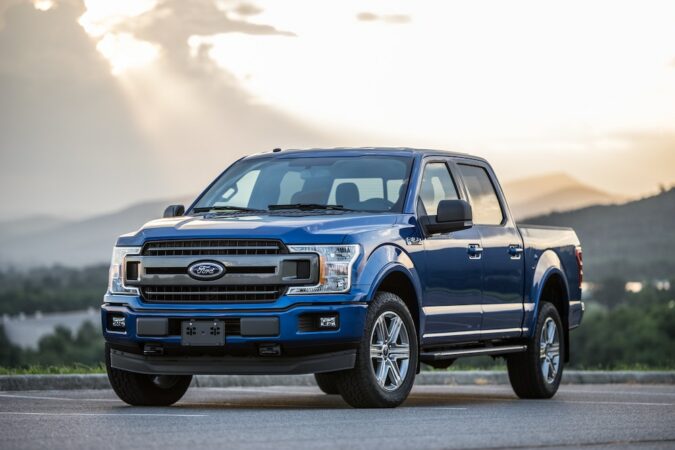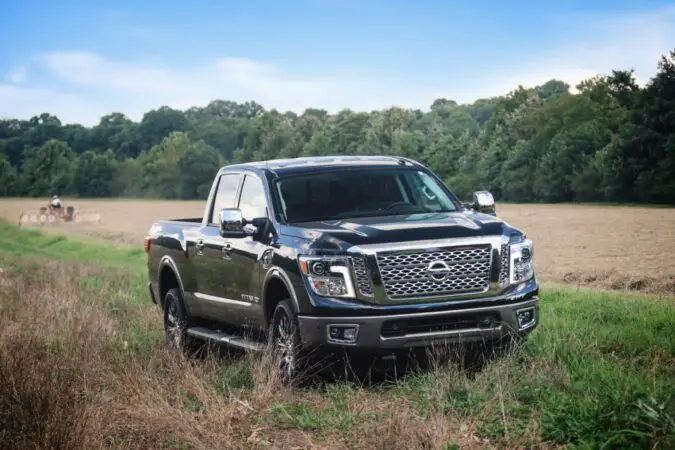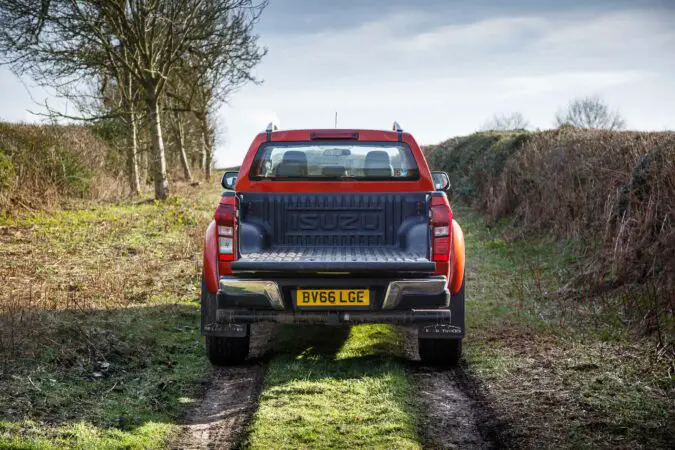Whether you’re a hardcore offroad enthusiast or you haul tons and tons of lumber or construction material, you will need to figure out the most appropriate type of truck bed for yourself. Truck beds come in different sizes and are separated by inches of measurements that can vary from manufacturer to manufacturer. Also, one of the questions that truck dealerships get most asked is: How long is a truck bed?
- How Long Is A Truck Bed
- How Long Is A Long Bed Truck
- How Long Is A Short Bed Truck
- Long Bed Vs Short Bed
- How Long Is A Tacoma Truck Bed
- Types Of Cab Styles
- Crew Cab Vs Regular Cab
- Crew Cab Vs Extended cab
- How To Choose The Right One?
- Frequently Asked Questions
As not all trucks come with the same bed truck (length), the answer to the above question is somewhat complicated. Also, it is best understood when divided into several different truck sizes. This article covers everything from sporty (and offroad) trucks to heavy-duty trucks, with each of the trucks having different-sized beds.
Also, the trucking world has seen much better days, and technology has gotten way ahead ever since. The latest and greatest software and technology have made it easier for truck manufacturers to provide luxury amenities in their trucks. But then again, all truck manufacturers have been doing so recently while offering a range of truck beds. It gets even harder to make a final decision.
However, this article will make that decision for you an easier one. This article intends to educate potential truck buyers regarding the different truck bed sizes and cab sizes that exactly match their needs. So, how long is a truck bed? Let’s find out.
How Long Is A Truck Bed
As stated earlier, the direct answer to this question is mixed and not straight. You would have to inspect the different bed sizes to know precisely the truck bed length. Also, the exact measurement – in terms of inches – varies from manufacturer to manufacturer. For instance, a heavy-duty truck has completely different (and longer) bed sizes compared to those found in conventional-sized/ daily-driven trucks.
Also, manufacturers base their truck bed sizes on three different terms: short, standard, and long. However, for reference, the standard (length) measurement of a standard truck bed is around 6 ft 5 inches.
Trucks like the Ford Maverick, Hyundai Santa Cruz, and Honda Ridgeline have shorter bed truck lengths. The aforementioned trucks’ bed sizes measure under 5 feet and categorize among the shortest truck bed lengths.
Also, other ‘short’ truck beds, like the ones found in the Nissan Frontier, have slightly larger truck bed sizes. The Nissan Frontier’s truck bed measures just shy of 5 ft, which shows how varying the lengths of ‘short’ bed trucks can be.
The same is the case with standard-sized truck beds and long-sized truck beds. The (overall) truck bed length starts from 4.3 ft for the Hyundai Santa Cruz. The length then goes all the way up to 8.19 ft (or 8.3 inches) for certain trucks like the 2015 Ram 1500.
Also, other factors may influence the truck bed’s length (or volume) as well. For instance, a ‘stepside’ truck is likely to have relatively more bed space compared to modern ‘fleetside’ truck beds of the same bed length.
However, stepside truck beds are a thing of the past and it’s very rare to see a manufacturer offering stepside truck beds.
How Long Is A Long Bed Truck
Put short, a long bed truck on average measures around 8 feet. Some trucks have slightly bigger ‘long’ bed trucks whilst others may have smaller-in-length ‘long’ truck beds. Therefore, the exact measurement – in terms of inches – may differ from manufacturer to manufacturer.
For instance, GMC with its Sierra truck, Ford in its F150 series, and Chevy with its Silverado. All such trucks have (slightly) varying long bed truck lengths; we’re talking inches. Still, you can expect the average length to be around 8 feet – as stated.
For reference, a 2022 GMC Sierra 1500 Limited truck’s long bed length measures an impressive 8.2 feet. Also, the 2022 Ford F150 Series’ long bed length measures 8.1 feet. The same is the case with all other ‘long bed’ trucks with very minimal differences in their truck bed lengths. So, an accurate representation of the above question may depend on the truck manufacturers that you’re considering.
Long bed (8 ft) trucks come in use for utilitarian purposes and other cargo-transporting works. So, if you haul tons and tons of lumber, cement, bricks, etc., daily, you will likely be needing the ‘long’ bed trucks to accommodate the extra weight.
Such big trucks having long beds tend to have bigger engines as well to accommodate all that extra space occupied space.
How Long Is A Short Bed Truck
Like most questions on this list-type guide, the exact answer to the above question may differ from manufacturer to manufacturer. Therefore, some manufacturers may provide slightly bigger ‘short’ bed trucks whilst others may offer a shorter ‘short’ bed length truck. However, for reference, you should be expecting an average length of around 65.5 inches (5.4 ft) for ‘short’ bed trucks.
But then again, the answer may differ in terms of inches. The above-answer of 5.4 feet is the result of taking the average of popular American trucks having short beds.
These American trucks include the Ford F150 series (67.1 in), Dodge Ram (67.4 in), GMC Sierra (69.9 in), Chevy Silverado (69.9 in), Toyota Tundra (65.6 in), Chevy Colorado (61.7 in), Ford Ranger (61.7 in), and Toyota Tacoma (60.5 in).
Therefore, if you include more trucks having ‘short’ beds the average may differ. So, to get a clearer picture of the actual ‘short’ bed truck length, depending on your workload, it is best to visit the dealer.
Short bed trucks can be seen among sporty trucks such as the Ram TRX, and the Ford Raptor. Because of their shorter bed truck length, these trucks are easy to maneuver and navigate through tight spaces. Also, this may be the reason (other than budget), why people use short-bed trucks as their daily drivers, even though some don’t even haul items in their truck beds.
With that said, by no means does it means that short-bed trucks cannot haul construction materials such as lumber, plywood sheets, bricks, etc. A short bed truck can comfortably haul such heavy-duty loads, it’s just a matter of space that makes all the difference.
Also, if you want to know the exact measurement (and use) of short bed trucks, there’s no better way than to visit the dealer.
Long Bed Vs Short Bed
Now that we know exactly the difference in length measurements of the two truck beds, let’s see how they compete against each other. Why should you buy a short bed truck over a long bed truck? Or, why should you buy a long bed truck over a short bed truck? The subheading intends to answer exactly that.
Right off the bat, if your workload is demanding and requires hauling a heavy-duty load, such as long plywood sheets, then long truck beds should be your pick. The long bed truck’s extra length will accommodate for more space and allow you to cram in more resources. An 8 ft truck bed is more than enough to satisfy a demanding workload.
Also, long truck beds are likely to have bigger engines to accommodate the extra weight, hence the engine won’t seem underpowered.
Even though medium-sized truck beds can accommodate some short dirt bikes or quad bikes, a long truck bed can easily fit them. Plus, you’ll be getting some extra space as well. So, if you take on offroad adventures frequently, long truck beds are your way to go.
However, this doesn’t undermine short bed trucks by any means. Short bed trucks remove the ‘extra length’ from the equation, hence shortening the overall length of the truck. As a result, short truck beds are relatively easy to maneuver and navigate through tight and cramped roads. Good maneuverability is one of the few reasons why people opt for short-bed trucks – other than budget.
Therefore, if your workload is less demanding and if you prefer a shorter truck length for maneuverability purposes, short-bed trucks are your answer. Short bed trucks make for a great family (and budget-friendly) truck that offers ideal legroom and headroom to the occupants.
How Long Is A Tacoma Truck Bed
Just like all major truck manufacturers, Toyota is also not behind in giving truck enthusiasts a run for their money. For truck enthusiasts who prefer having big-sized trucks with a powerful engine under their truck bonnets, there’s the Tundra.
For people who prefer a short and budget friendly-truck that’s also great at off-roading, there’s the Tacoma. Also, this is the reason why a Tacoma truck bed (length) is usually shorter than the bed length(s) you find in the Tundra.
Unlike the Tundra, the Tacoma can only be equipped with two bed sizes – short and long-sized beds. A 2022 Toyota Tacoma’s (short-sized) bed length measures 60.5 in (5.04 ft to be exact). Meanwhile, the 2022 Tacoma (long-sized) truck bed’s length measures 73.7 in (6.14 ft to be exact).
Types Of Cab Styles
One of the factors – other than truck bed sizes – that most consider before finalizing buying the truck, is the type of the truck’s cab size. Typically, truck manufacturers allow you to choose from four different truck cab styles, depending on your routine workload.
There are several other cab styles that truck manufacturers offer, including king cabs, CrewMax cabs, extended cabs, and SuperCabs. But these terms are just another derivation of the main cab styles with very minimal differences.
Nevertheless, in this article, we will be covering three (common) cab styles – regular cab, extended cab, and crew cab. Also, we’ll be comparing the cab styles side-by-side as well.
Crew Cab Vs Regular Cab
First of all, what is a crew cab? A crew cab – as the term suggests – makes room for four people to sit comfortably (and 5 people for shorter journeys). Hence, the term ‘crew’ is used to highlight how the truck can sit you and your crew comfortably. This means that the truck has four full-sized doors – a bit like sedans.
If you’re in the market for a (family) truck, chances are that you’ll be looking at a crew cab truck. This truck allows more than enough headroom and legroom for four people, hence making it an ideal vehicle for families. That said, all major truck manufacturers have coined separate terms for ‘crew cab’ truck styles to make their trucks look apart. However, you need not worry as these specific names all lead to one single cab style: Crew Cab.
For instance, Chevrolet likes to call ‘extended cabs’ for its crew cab trucks. Similarly, Ford uses the term ‘SuperCrew’ to describe its crew cab-style trucks. In the same way, GMC cab trucks go by the name of ‘Quad Cabs.’
Meanwhile, regular cabs – or otherwise known as ‘double cabs’ – are the opposite of crew cabs. Therefore, regular cabs comprise a single row of seats instead of the double rows found in crew cabs. Hence, regular cabs can sit no more than two people; the driver and the passenger themselves.
Also, most regular cabs come standard in terms of equipment as well. For instance, steel wheels, cheap interior quality, and cheap build quality are common amongst many regular cabs. Hence, such cabs are used to haul and transport/tow equipment. In some cases, the bed size for regular cabs is bigger (thanks to one less row of seats), hence accommodating more space.
Crew Cab Vs Extended Cab
As discussed earlier on, a crew cab style allows four people (including yourself) to sit easily in the truck. Hence, crew cab trucks tend to have 4 doors – for each passenger to easily climb in and out. As a result, crew cab trucks are known to be family-friendly.
On the other hand, an extended cab is just an extended version of the ‘regular cab.’ Think of it more like an upgraded version of the ‘regular cab’. This means that an extended cab is slightly bigger (in terms of cabin length).
Also, the extended cab allows just enough room for the second row of seats to fit in. Even though manufacturers provide second-row seats, they are as useful as a car without tires. The second-row seats are cramped with practically very little (or no) legroom. Hence, the back seats in extended cabs are mostly used to occupy luggage or household items like groceries.
For better access to the second-row seats, extended cabs use smaller rear doors that open in the opposite direction of the front doors. Some may say that the rear doors resemble a bit like a Rolls Royce with its ‘suicide doors’. With that said, the rear seats may accommodate children, but for shorter journeys.
This is where the crew cab comes in. A crew cab offers fully-functional rear seats to its occupants be it, adults or children. Therefore, for those deciding between the ideal truck cab style to transport their family, friends, or coworkers, a crew cab should be your top pick. Crew cab trucks offer excellent car-like comfort to all passengers and an adequate bed size as well.
However, if you’re sure that the rear row of seats won’t be used at all, then you should consider an extended cab.
How To Choose The Right One?
We learned the three different types of truck bed sizes. We saw the answer to the question: how long is a truck bed? Also, we read how the different truck cab styles compare against each other. That said, potential truck buyers can be overwhelmed by the numerous amounts of options available (including bed truck sizes and truck cab styles).
All truck manufacturers strive their best to ensure that their trucks are top-notch in terms of equipment, features, reliability, and performance. So, choosing between the manufacturers is not as big of an issue as choosing between the right bed truck size and truck cab style. So, let’s quickly run through some of the merits which you may consider before buying an ideal truck.
First up, if what you do is haulage and transport heavy-duty cargo daily, then you should consider long 8 ft bed trucks. Also, in most cases, long (8 ft) truck beds come with bigger engines that can be utilized for towing purposes like campervans or trailers. Choosing among the manufacturers is entirely up to you as different manufacturers offer unique truck features, which you may like or dislike.
Moreover, you can fit quad bikes or dirt bikes in long truck beds thanks to the extra space. So, if you like off-roading (along with your family members or friends), a long truck bed should be your priority. Meanwhile, if you prefer having a truck that’s easy to park (and fit in the garage), a short-bed truck is your answer.
In terms of cab styles, the answer is pretty straightforward; choose a crew cab, which is a lot family-friendly and offers excellent back-seat room. Moreover, short bed trucks – thanks to their shorter overall length – offer good handling and provide a car-like driving feeling.
Facts: Understanding Pickup Truck Bed and Cab Sizes
- Pickup truck beds are available in short, standard, and long sizes.
- Long beds are usually 8 feet long, standard beds are 6 feet 5 inches long, and short beds are roughly 5 feet 8 inches long.
- Most pickup trucks come with options such as two-wheel or four-wheel drive, and light or heavy-duty.
- Light-duty trucks can haul a maximum of 12,000 pounds, while heavy-duty trucks can tow up to 20,000 pounds.
- Pickup trucks can have either conventional or unibody construction.
- Buyers should consider the size of the bed when shopping for a new truck.
- The size of a truck bed can be determined by multiplying the length of the bed by the truck’s width.
- Pickup trucks come in regular or standard, extended, double, and crew cab sizes.
- Crew cabs have more legroom in the rear seats compared to double cabs.
- The Chevrolet Silverado 1500 and GMC Sierra 1500 have some of the longest beds on the market, with the Sierra’s 5-foot-8-inch bed offering more cargo capacity than Ford’s and Ram’s 6-foot-4-inch standard-sized beds.
How Long Is A Truck Bed – FAQs
Here are some popular FAQs:
What Is A Crew Cab
A crew cab – as the name suggests – is a type of truck cabin style that allows four (and sometimes five) people to sit comfortably in the truck. Although a crew cab can transport four people comfortably, it can also fit a total of five people in the truck, including the driver. However, due to the upright position of the backseats in most crew cab trucks, the ride may become uncomfortable and cramped. Crew cab trucks use four (normal-sized) doors for each passenger. Moreover, crew cabs give a car-like interior feeling, except for the raised height.
How Long Is A Truck Bed
Truck bed sizes can vary depending on the type of truck bed being used. For instance, truck manufacturers, such as GMC, Chevy, Toyota, and Ford, allow users to choose from three truck bed sizes – short, standard, and long. Also, the exact truck bed measurement (in terms of inches) can vary from manufacturer to manufacturer. Short-sized truck beds can measure anywhere between 5.3 ft and 5.8 ft depending on the truck make and model. Similarly, the average (length) measurement for a standard-sized truck bed lays anywhere between 6.3 ft to 6.8 ft, depending on the truck make and model. Lastly, a long bed truck length can measure up to 8 ft.
How Long Is A Truck
The exact length of a truck depends on several variables. These variables include the truck cab style, truck bed size, and manufacturer preferences. A shorter truck cab style, such as a ‘regular’ cab or an ‘extended cab’ are likely to have shorter (truck) lengths. Also, bigger truck cab styles, such as (Ford’s) SuperCrew cab style, or ‘king’ cab styles, tend to have bigger truck lengths. Moreover, the truck bed sizes can also influence the truck’s overall length. So, short truck beds are less likely to contribute more to the truck’s length, compared to standard-sized and long bed trucks.
What Does HD Mean On A Truck
The word HD printed on various truck panels is the short abbreviation of the term ‘Heavy Duty.’ Such trucks are used to haul/tow heavy-grade equipment. Moreover, HD trucks haul high payload cargo such as bricks, (bags of) cement, lumber, plywood sheets, or furniture. HD trucks are known for their improved towing capacity and can comfortably tow trailers or campervans. Also, to haul heavy cargo, HD trucks use bigger and stronger mechanical features. These features may include bigger (and stronger) engines, brakes, (front and rear) suspension, improved rear axles, and larger bearings.
What Is A Fleetside Bed
Introduced in the 1950s, a fleetside bed involves tucking the wheel arches in the bed itself. This is why you’d see two bulging hemispheres on the sides of most truck beds. GMC, Chevy, and Dodge were the early adopters of fleetside beds in their respective trucks. And truck manufacturers are still using the ‘fleetside’ bed style in their trucks. But since the truck world has evolved, manufacturers try their best to hide the ‘bulging’ rounds that take up most of the truck bed’s space. Modern trucks have a well-integrated and well-utilized fleetside truck style.

